Abstract
1 The release of bound oxygen from oxyhaemoglobin by allosteric effectors is considered as a model for those drug-receptor interactions where the primary response to agonist binding is the release of a second messenger species. 2 A theory of haemoglobin oxygenation, based on the two-state model of Monod, Wyman & Changeux (1965) is used to predict the relationship between 'pharmacological' response and dose of agonist. This relationship is the same as that derived from classical pharmacological occupancy theory. 3 The potency of an agonist is a weighted average of its affinities for the two conformational states of the receptor. 4 The efficacy of an agonist depends not only upon its binding to one of the two conformational states, but also on its ability to alter the functional properties of that state by lowering the affinity of the state for the second messenger. 5 2,3-Diphosphoglycerate and adenosine triphosphate are approximately equipotent and of similar efficacy, but inositol hexaphosphate is about 500 times more potent and has a higher efficacy.
Full text
PDF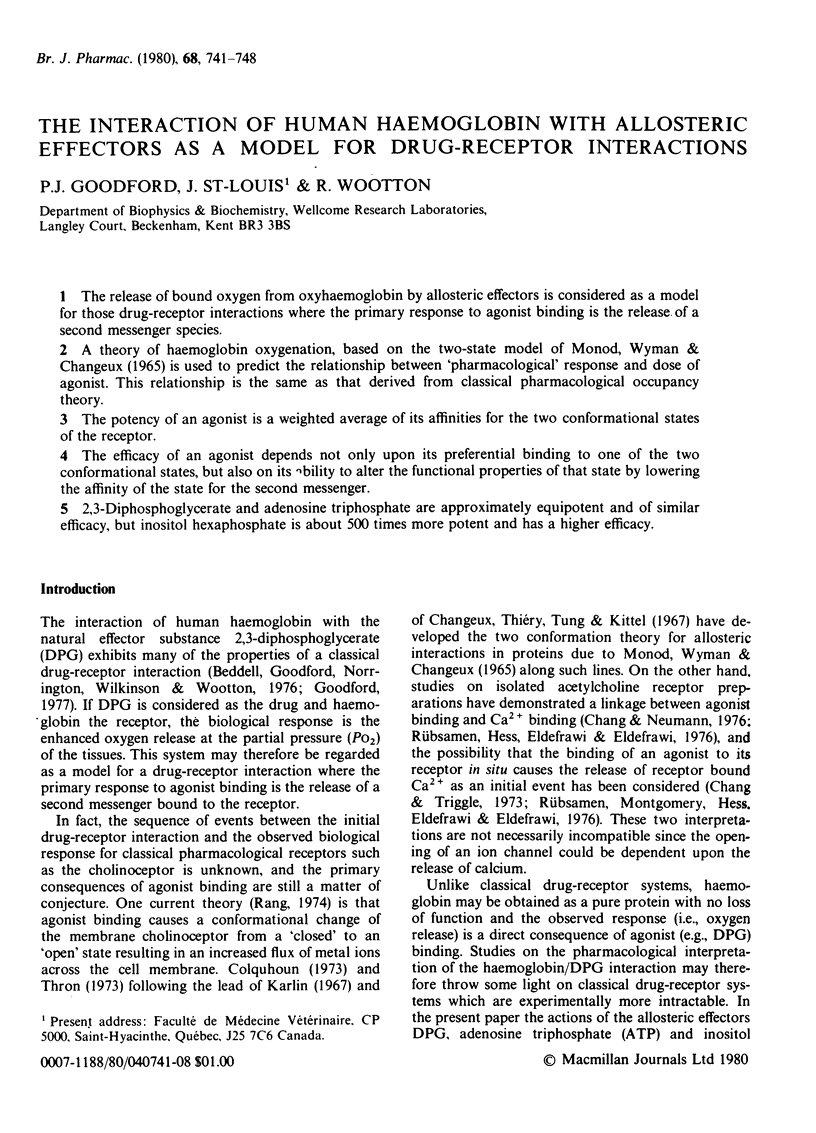
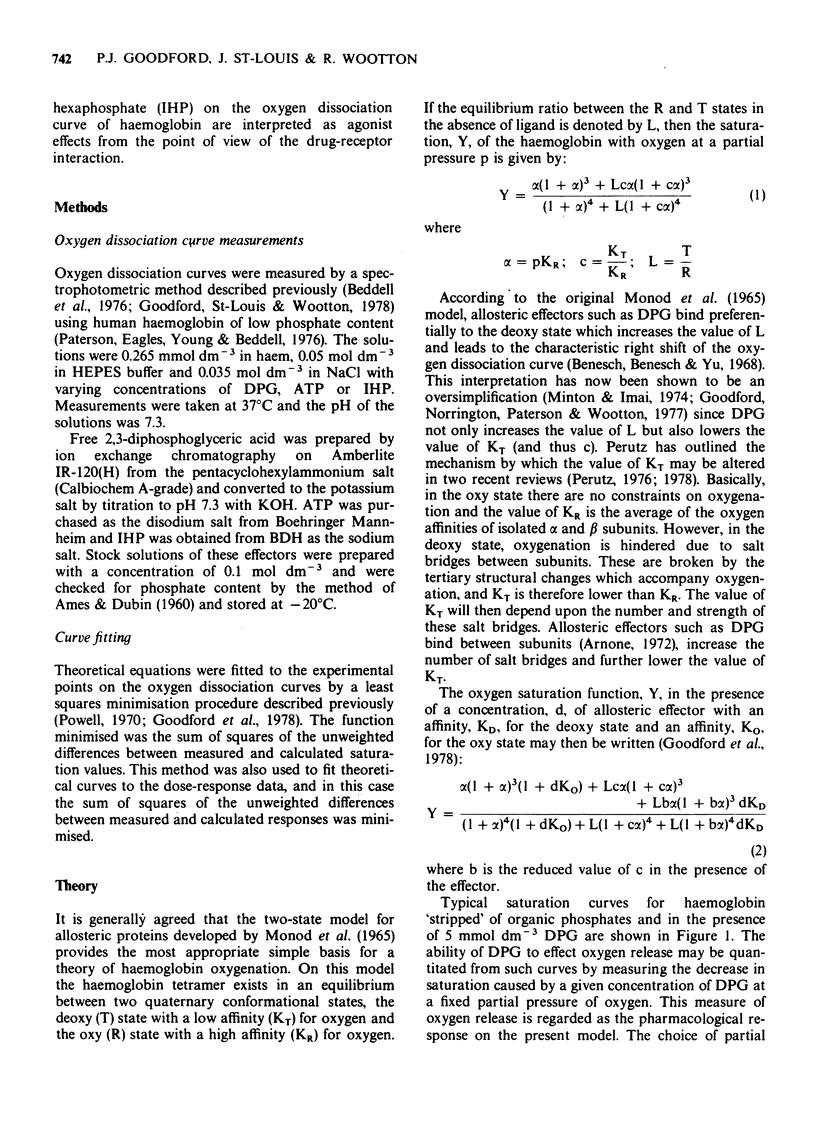
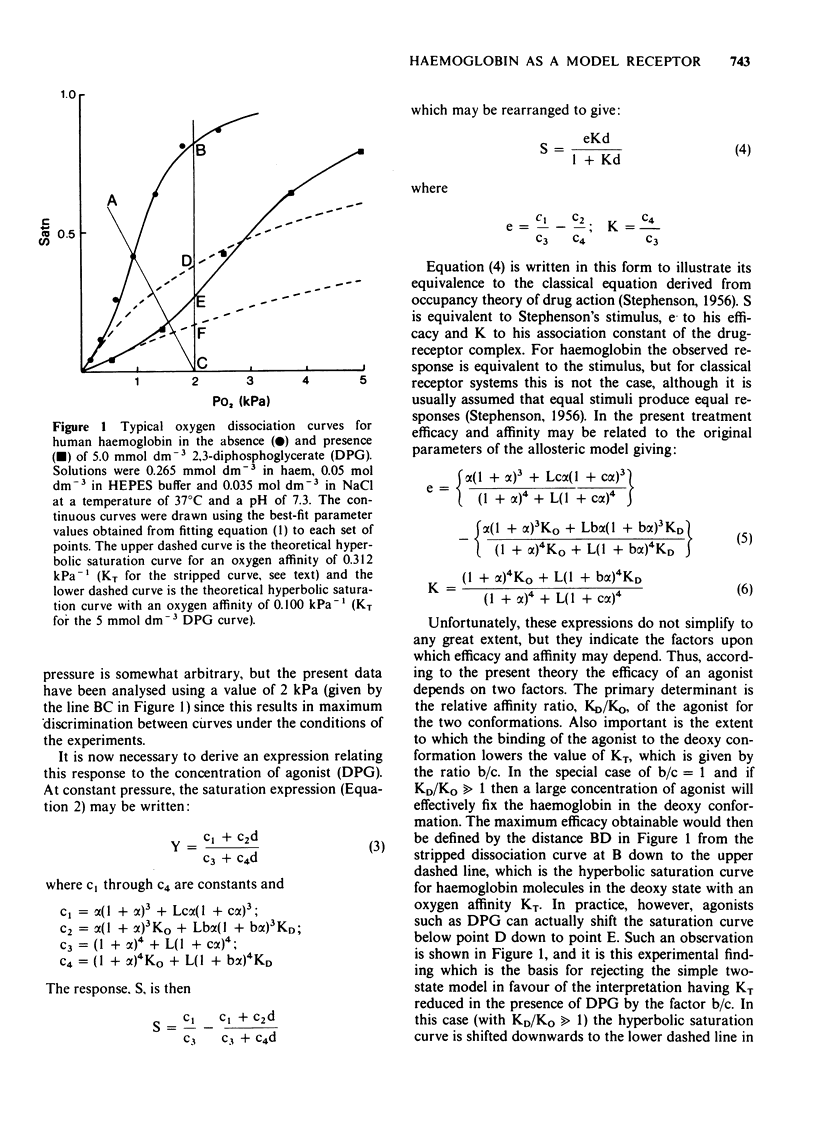
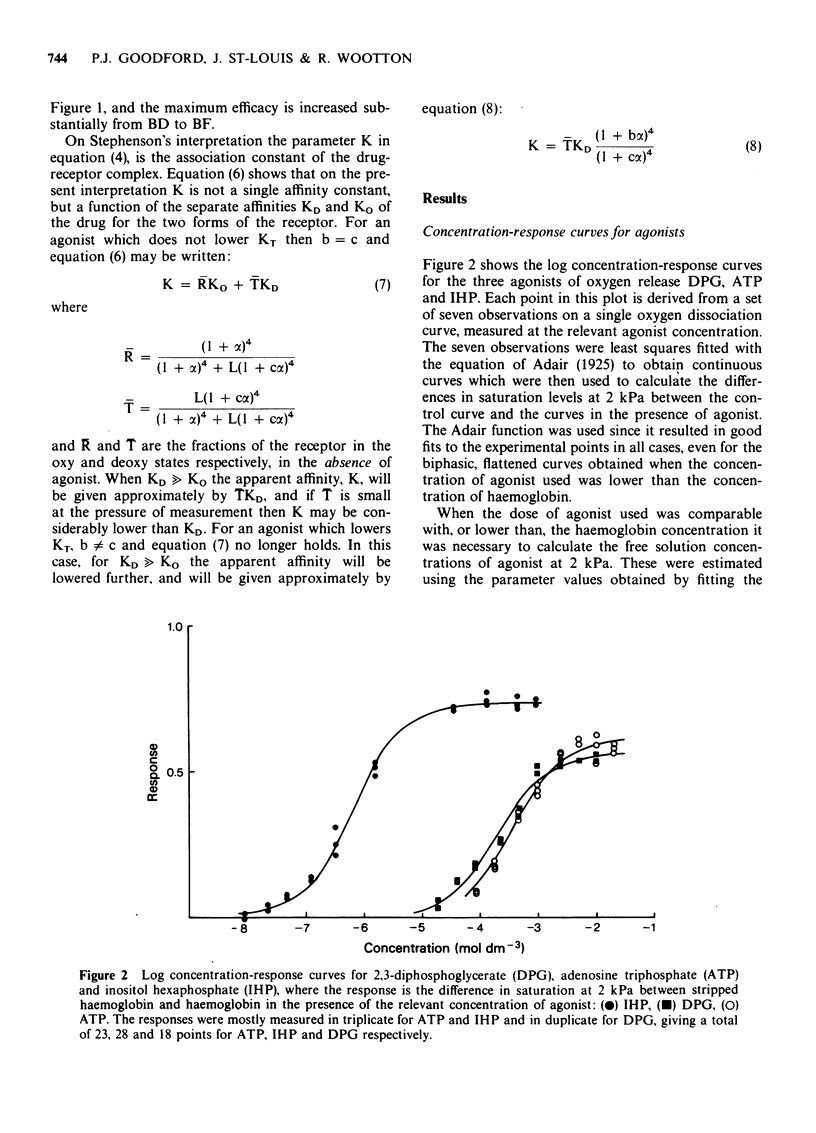
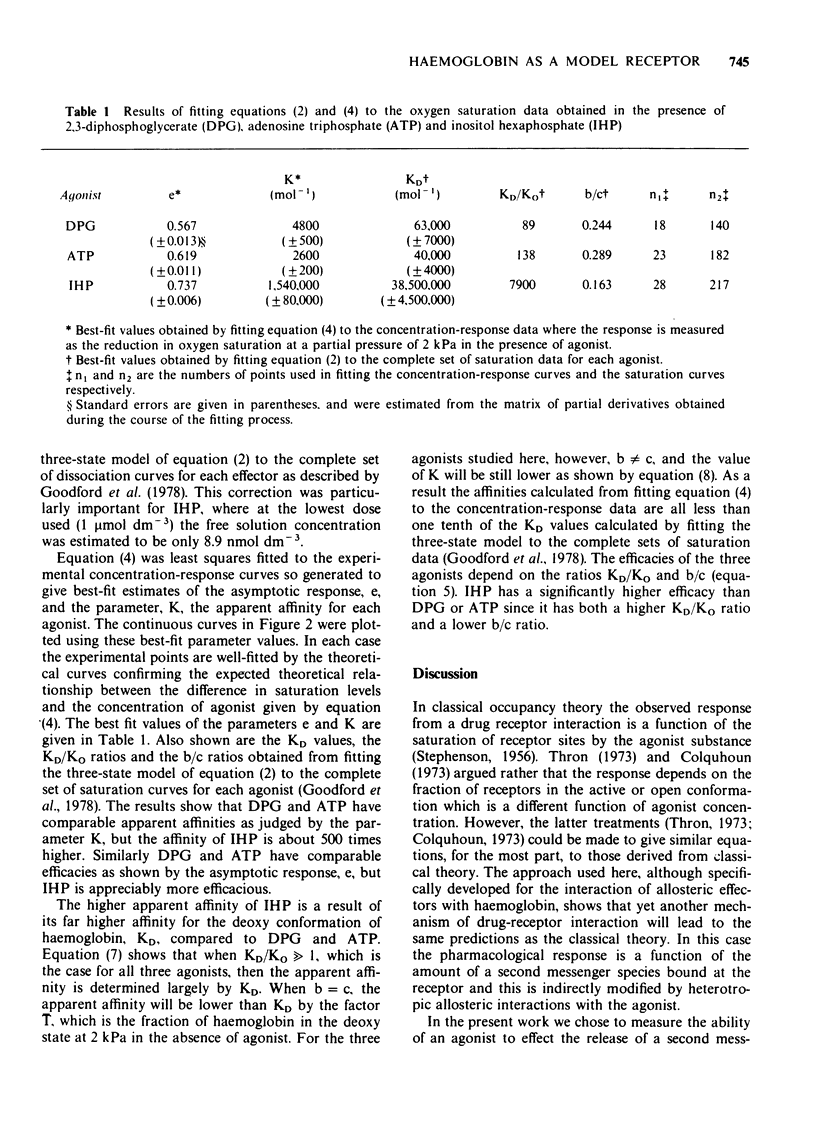
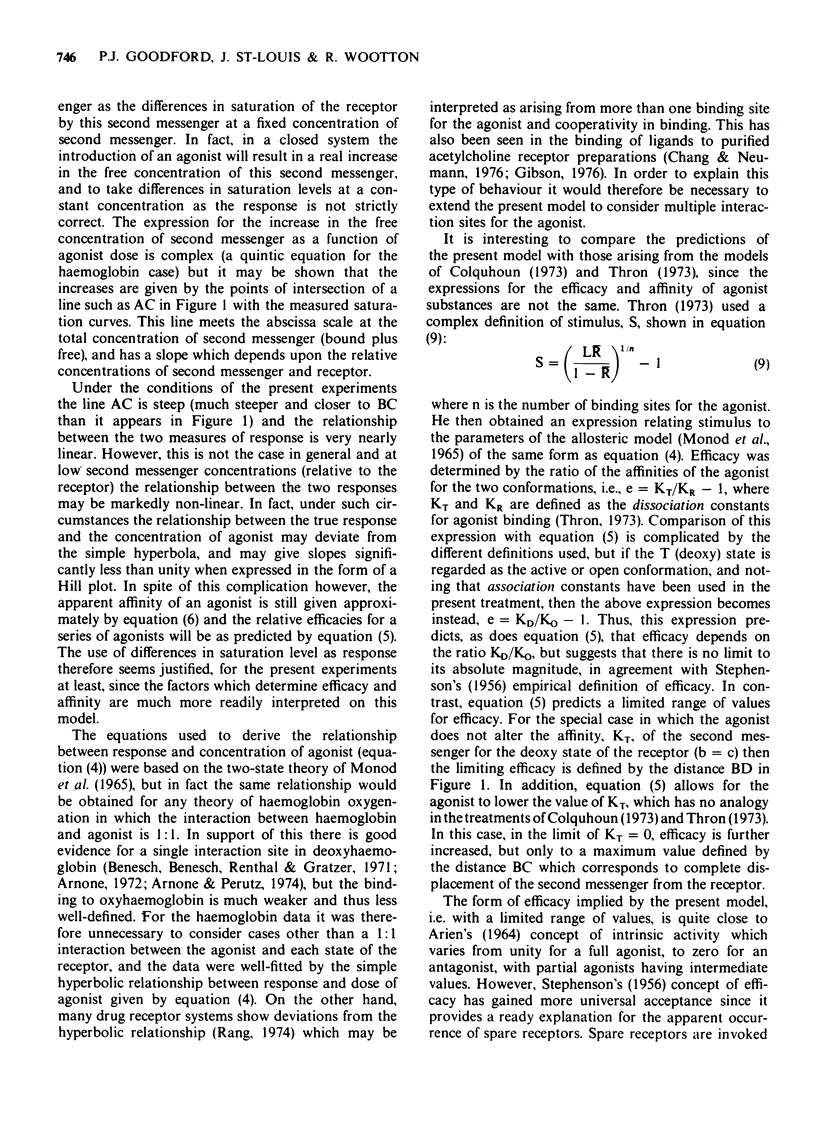
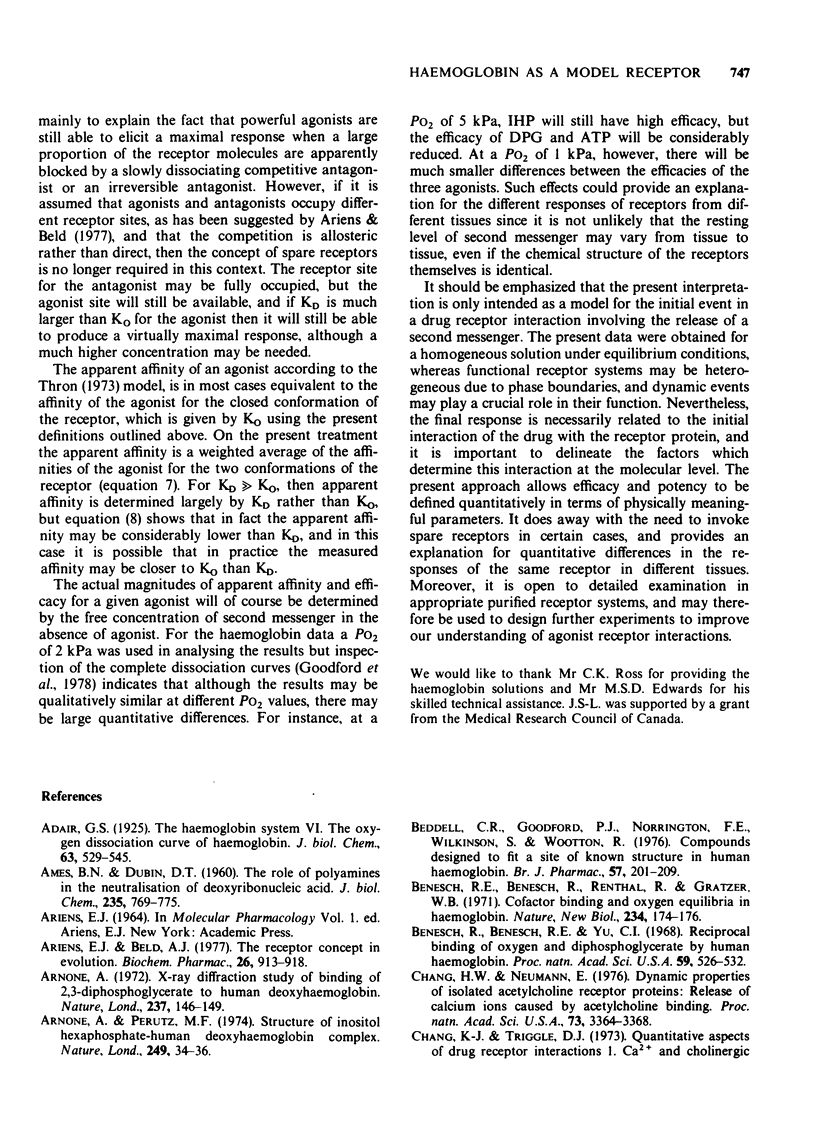
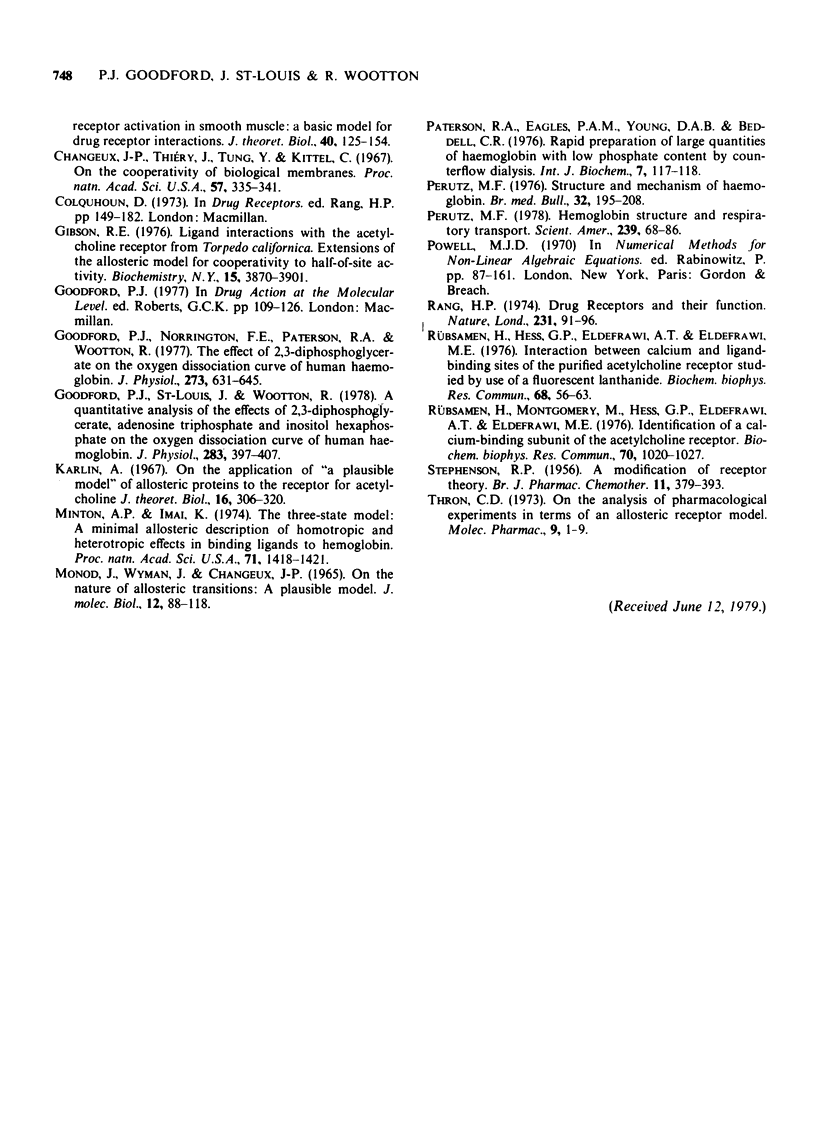
Selected References
These references are in PubMed. This may not be the complete list of references from this article.
- AMES B. N., DUBIN D. T. The role of polyamines in the neutralization of bacteriophage deoxyribonucleic acid. J Biol Chem. 1960 Mar;235:769–775. [PubMed] [Google Scholar]
- Ariëns E. J., Beld A. J. Commentary: The receptor concept in evolution. Biochem Pharmacol. 1977 May 15;26(10):913–918. doi: 10.1016/0006-2952(77)90465-8. [DOI] [PubMed] [Google Scholar]
- Arnone A., Perutz M. F. Structure of inositol hexaphosphate--human deoxyhaemoglobin complex. Nature. 1974 May 3;249(452):34–36. doi: 10.1038/249034a0. [DOI] [PubMed] [Google Scholar]
- Arnone A. X-ray diffraction study of binding of 2,3-diphosphoglycerate to human deoxyhaemoglobin. Nature. 1972 May 19;237(5351):146–149. doi: 10.1038/237146a0. [DOI] [PubMed] [Google Scholar]
- Beddell C. R., Goodford P. J., Norrington F. E., Wilkinson S., Wootton R. Compounds designed to fit a site of known structure in human haemoglobin. Br J Pharmacol. 1976 Jun;57(2):201–209. doi: 10.1111/j.1476-5381.1976.tb07468.x. [DOI] [PMC free article] [PubMed] [Google Scholar]
- Benesch R. E., Benesch R., Renthal R., Gratzer W. B. Cofactor binding and oxygen equilibria in haemoglobin. Nat New Biol. 1971 Dec 8;234(49):174–176. doi: 10.1038/newbio234174a0. [DOI] [PubMed] [Google Scholar]
- Benesch R., Benesch R. E., Yu C. I. Reciprocal binding of oxygen and diphosphoglycerate by human hemoglobin. Proc Natl Acad Sci U S A. 1968 Feb;59(2):526–532. doi: 10.1073/pnas.59.2.526. [DOI] [PMC free article] [PubMed] [Google Scholar]
- Chang H. W., Neumann E. Dynamic properties of isolated acetylcholine receptor proteins: release of calcium ions caused by acetylcholine binding. Proc Natl Acad Sci U S A. 1976 Oct;73(10):3364–3368. doi: 10.1073/pnas.73.10.3364. [DOI] [PMC free article] [PubMed] [Google Scholar]
- Chang K. J., Triggle D. J. Quantitative aspects of drug-receptor interactions. I. Ca2+ and cholinergic receptor activation in smooth muscle: a basic model for drug-receptor interactions. J Theor Biol. 1973 Jul;40(1):125–154. doi: 10.1016/0022-5193(73)90168-9. [DOI] [PubMed] [Google Scholar]
- Changeux J. P., Thiéry J., Tung Y., Kittel C. On the cooperativity of biological membranes. Proc Natl Acad Sci U S A. 1967 Feb;57(2):335–341. doi: 10.1073/pnas.57.2.335. [DOI] [PMC free article] [PubMed] [Google Scholar]
- Eldefrawi A. T., Eldefrawi M. E. Identification of a calcium-binding subunit of the acetylcholine receptor. Biochem Biophys Res Commun. 1976 Jun 7;70(3):1020–1027. doi: 10.1016/0006-291x(76)90694-x. [DOI] [PubMed] [Google Scholar]
- Gibson R. E. Ligand interactions with the acetylcholine receptor from Torpedo californica. Extensions of the allosteric model for cooperativity to half-of-site activity. Biochemistry. 1976 Aug 24;15(17):3890–3901. doi: 10.1021/bi00662a037. [DOI] [PubMed] [Google Scholar]
- Goodford P. J., Norrington F. E., Paterson R. A., Wootton R. The effect of 2,3-diphosphoglycerate on the oxygen dissociation curve of human haemoglobin. J Physiol. 1977 Dec;273(3):631–645. doi: 10.1113/jphysiol.1977.sp012114. [DOI] [PMC free article] [PubMed] [Google Scholar]
- Goodford P. J., St-Louis J., Wootton R. A quantitative analysis of the effects of 2,3-diphosphoglycerate, adenosine triphosphate and inositol hexaphosphate on the oxygen dissociation curve of human haemoglobin. J Physiol. 1978 Oct;283:397–407. doi: 10.1113/jphysiol.1978.sp012508. [DOI] [PMC free article] [PubMed] [Google Scholar]
- Karlin A. On the application of "a plausible model" of allosteric proteins to the receptor for acetylcholine. J Theor Biol. 1967 Aug;16(2):306–320. doi: 10.1016/0022-5193(67)90011-2. [DOI] [PubMed] [Google Scholar]
- MONOD J., WYMAN J., CHANGEUX J. P. ON THE NATURE OF ALLOSTERIC TRANSITIONS: A PLAUSIBLE MODEL. J Mol Biol. 1965 May;12:88–118. doi: 10.1016/s0022-2836(65)80285-6. [DOI] [PubMed] [Google Scholar]
- Minton A. P., Imai K. The three-state model: a minimal allosteric description of homotropic and heterotropic effects in the binding of ligands to hemoglobin. Proc Natl Acad Sci U S A. 1974 Apr;71(4):1418–1421. doi: 10.1073/pnas.71.4.1418. [DOI] [PMC free article] [PubMed] [Google Scholar]
- Perutz M. F. Structure and mechanism of haemoglobin. Br Med Bull. 1976 Sep;32(3):195–208. doi: 10.1093/oxfordjournals.bmb.a071363. [DOI] [PubMed] [Google Scholar]
- Rang H. P. Drug receptors and their function. Nature. 1971 May 14;231(5298):91–96. doi: 10.1038/231091a0. [DOI] [PubMed] [Google Scholar]
- Rübsamen H., Hess G. P., Eldefrawi A. T., Eldefrawi M. E. Interaction between calcium and ligand-binding sites of the purified acetylcholine receptor studied by use of a fluorescent lanthanide. Biochem Biophys Res Commun. 1976 Jan 12;68(1):56–63. doi: 10.1016/0006-291x(76)90009-7. [DOI] [PubMed] [Google Scholar]
- STEPHENSON R. P. A modification of receptor theory. Br J Pharmacol Chemother. 1956 Dec;11(4):379–393. doi: 10.1111/j.1476-5381.1956.tb00006.x. [DOI] [PMC free article] [PubMed] [Google Scholar]
- Thron C. D. On the analysis of pharmacological experiments in terms of an allosteric receptor model. Mol Pharmacol. 1973 Jan;9(1):1–9. [PubMed] [Google Scholar]


